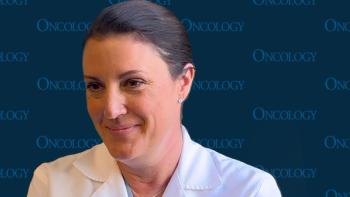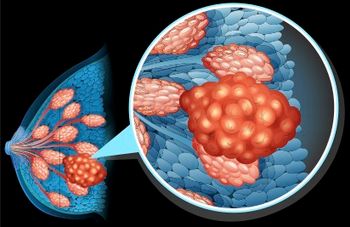
SABCS: Research From This Year's Conference
Cancer Network interviews Kent Osborne, who is the moderator of the year in review session. He has been involved with the meeting since its beginning. The international San Antonio Breast Cancer Symposium is unique as it facilitates the interaction of both basic and science researchers and clinicians to combine the efforts of laboratory research and clinical research for better treatment and patient care.
As part of its coverage of SABCS, thecancernetwork.comspoke with C. Kent Osborne, MD, who is the director of both the Lester and Sue Smith Breast Center and the Dan L. Duncan Cancer Center at Baylor College of Medicine in Houston. He is also professor of medicine in cellular and structural biology at Baylor. Dr. Osborne sat on the executive committee for SABCS this year, and discusses not only his own research, but also the year in breast cancer and what were the most exciting advances we've seen in 2011.
-Interviewed by
CancerNetwork: Dr. Osborne, what, in your opinion, is one of the most exciting results that we will hear about at the meeting?
Dr. Osborne: First of all, the results of a large randomized trial known as the CLEOPATRA trial in patients with metastatic breast cancer. This trial, along with several others reported earlier this year, looks at a combination of drugs that block HER2. HER2 is a cause of the cancer in about 20% to 25% of breast cancer patients. We have made excellent progress in blocking that pathway, but still, some patients are resistant. What we're discovering based on studies presented earlier this year and those presented at the San Antonio meeting; we're going to find that a combination of drugs to more completely block the pathway is superior to the old standby, which is Herceptin [trastuzumab]-which has, itself, made a big impact in survival for breast cancer in patients with this kind of breast cancer. We're seeing a more effective regimen with the combination of other drugs that also block the pathway, and we will see the results of the CLEOPATRA study that hopefully will continue to show this result.
CancerNetwork: Can you give us a sense of how many patients become resistant to Herceptin?
Dr. Osborne: Let's look at the adjuvant setting-that is, getting chemotherapy or other hormonal therapy or Herceptin after surgery-in patients where there is no evidence of disease. These are aggressive tumors; they metastasize early and patients recur soon. Chemotherapy itself is quite effective in these tumors, and the use of chemotherapy reduced the risk of recurrence by about half in these patients.
Let's say a woman presented with a HER2-positive breast cancer and had several positive lymph nodes. That person's chance of recurrence in 10 years might be 60% to 70%, but chemotherapy lowered that by half, down to 30% or 35%. Well, the addition of trastuzumab to the chemotherapy lowered it by another half, so with trastuzumab plus chemotherapy, we have converted what is normally thought of as a more aggressive kind of breast cancer into a “relatively good” kind of breast cancer. Still, however, about half of the patients who are treated with trastuzumab develop resistance and will have a recurrence despite its use, so we're now trying to discover why that is. And we have some pretty good ideas-one of which is that HER2-targeted therapy with Herceptin only partially blocks the HER2 pathway and that more complete blockade with multiple drugs seems to be a better way of doing it.
CancerNetwork: Do you think combination therapy, across the cancers, will result in better outcomes? Do you feel that combination therapy of Herceptin added with another drug with be the standard of care for all HER2-positive patients in the future?
Dr. Osborne: Yes. But the question is: which combination? There are several that people are looking at. The CLEOPATRA study is using Herceptin combined with a drug called pertuzumab. There are other combinations reported that are very exciting, such as Herceptin combined with lapatinib, and there is a very large adjuvant trial going on now, and accrual to the trial has just been completed. It's known as the ALTTO trial and it's comparing lapatinib by itself, trastuzumab by itself, and the combination of lapatinib plus trastuzumab. When that result comes out, if I had to guess I would say that the combination of lapatinib and Herceptin plus chemotherapy will prove to be a lot better. I'm going to guess that it's also going to be better when it's used in the adjuvant setting, but that remains to be seen.
I think that when that study comes out, if it's positive, yes, lapatinib and Herceptin will become the standard, but then there's the issue of whether some of these other combinations might be just as good or better, or less toxic, and that's what people are trying to work on now.
CancerNetwork: Thinking about the continuing challenge of detecting and treating breast cancer, what has been one of the biggest successes in your mind in 2011, in either detection or treatment?
Dr. Osborne: I would say that there are two things. First, another trial has been presented, but I don't think it's been published yet, and that trial looked at another way of preventing breast cancer with the use of a drug called exemestane (Aromasin). Of course, tamoxifen is an anti-estrogen that has been shown to reduce the risk of breast cancer in high-risk individuals by about half. Well, this exemestane drug works by lowering the amount of estrogen in the body in postmenopausal women, so that's another way of treating breast cancer. In this trial, they compared exemestane vs placebo, and exemestane was also highly effective, so this demonstrates how important estrogen is in causing breast cancer or contributing to it. In this study, I think there was a 70% reduction in the risk of acquiring breast cancer.
The biggest problem we're having in the area of breast cancer prevention is in getting high-risk individuals to use drugs like tamoxifen or exemestane. I think the second big thing is the clear demonstration now, in multiple studies, that combining drugs to block HER2 works better than any drug alone, for example trastuzumab or lapatinib. The next question of course is, do we really need chemotherapy in these patients? In a study that our group presented at ASCO this year, we didn't use chemotherapy. It was a neoadjuvant study, so we could detect how much the tumor shrank, and 12 weeks of lapatinib plus Herceptin resulted in 40% total eradication of the invasive breast cancer from the breast without any chemotherapy at all. So there is probably a group of patients with HER2-positive breast cancer-maybe as many as 40% to 50% of them-who don't need chemotherapy. This remains to be proven in large trials, but the data seem to indicate that we're getting almost as good a result just with the combined HER2 blockade as we are with our combined HER2 blockade plus chemotherapy. I'm certain that there is a group of patients who can be treated with this targeted therapy alone. Now the question is, how can we identify them ahead of time and spare them the toxicities and costs of chemotherapy?
CancerNetwork: Not using chemotherapy-is this something that is going to be part of a session at the San Antonio meeting?
Dr. Osborne: Not much, but I'm going to mention it briefly in my discussion of three papers that will be presented at the meeting on HER2-targeted therapy. On Friday, there is a study looking at a new HER pathway inhibitor called neratinib, and then there is the CLEOPATRA study. There's also another study looking at the combination of Herceptin plus pertuzumab and at different chemotherapy regimens to determine how tolerable the regimens are. I'll be discussing that, and one of the questions I will raise is, do we really need chemotherapy in all patients or is there a subset who may not need it? But because those studies were presented at either ASCO or last year at this meeting, it's not going to be a major discussion point until additional data come out.
CancerNetwork: We know that it takes an understanding of both the biology and the pathways involved in breast cancer to effectively diagnose and treat the disease-and the SABCS puts an emphasis on allowing communication between clinicians and basic researchers. Could you describe how this came to be a critical aspect of the symposium?
Dr. Osborne: Yes. The story involves Bill McGuire and Charles Coltman, who are the co-directors of the division where I first started my career in 1977 at the University of Texas Health Science Center at San Antonio. The three of us started this symposium way back then, and initially it was just a symposium for the local cancer doctors, a sort of educational meeting, but then we decided that we should bring in some science and requested that people submit abstracts and asked them to present their research data at the meeting. It was Bill's philosophy back then, and I guess I inherited it when I began to take over the meeting as director in 1992-it was the idea of translational research, which is doing research in the laboratory that can be directly translated to improving patient care. Bill might have been one of the first translational researchers for any disease, before the term was even coined.
Bill always believed that the meeting should include basic science and clinical science, and that these two different types of research should all be presented in the same room, not in separate rooms, so that the clinicians would have a greater understanding of the biology of the disease and the basic scientists would have a greater understanding of the challenges in the clinic. I think that's been a very successful approach, and in fact, although there is an occasional clinician who says, “Gee, I'm bored by the basic science,” or a basic scientist who says, “Gee, the clinical stuff doesn't have any relevance to me,” the great majority of the people have liked this format. You sit in one room and you hear about biology and you hear about the results of clinical trials. I think that cross-fertilization has been very good. We were probably doing that earlier in many ways, but now it's mandatory because now our treatments are all based on knowing the biology of the disease and knowing what pathways are driving the cancer and what could be the escape pathways, when the tumor outsmarts us, to get around the drug that we're using. One has to know the biology of the disease now, so we're going to keep this format of having biology and clinical medicine presented at the meeting together.
Newsletter
Stay up to date on recent advances in the multidisciplinary approach to cancer.


















































































